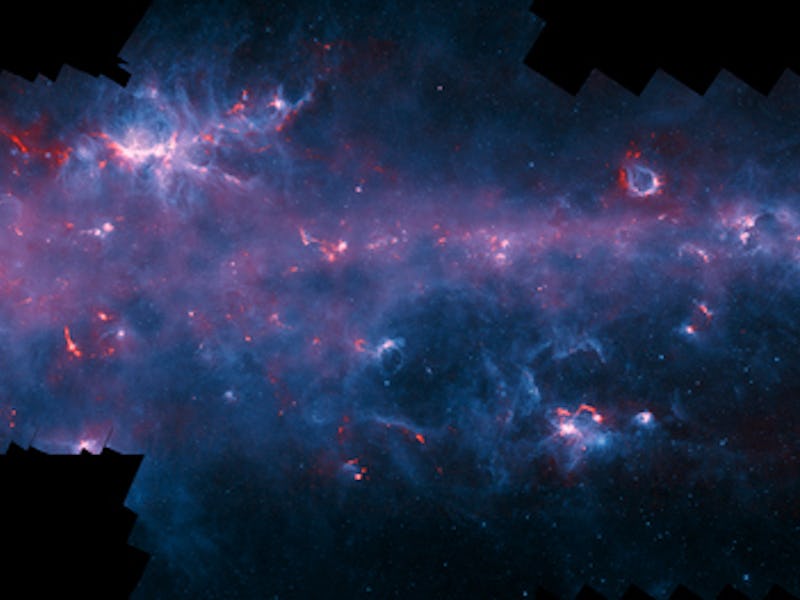Massive Telescopes Captured the Milky Way’s Stupendous Galactic Plane
The sprawling view is four times bigger than any map ever made before.

The immense pools of stars and near-frozen gases sprawling across the Milky Way’s southern shores have winked at us from afar, but we’ve never been able to capture their beauty until now.
Pointing Chile’s APEX telescope toward the southern hemisphere’s night sky, researchers mapped the Milky Way’s “Galactic Plane” in a sweep of our galaxy four times the size of previous maps, covering an area 140 degrees long and 3 degrees wide.
It’s the first time the Galactic Plane (where disk-shaped mass encompassing the majority of the galaxy’s mass) has been captured at sub-millimeter wavelengths — that is, between infrared light and radio waves, which are invisible to the naked eye. The level of detail captured by the map is unprecedented.
This comparison shows the central regions of the Milky Way observed at different wavelengths.
The data from the APEX telescope — they’re the bright red threads — are overlaid on the shadowy blue landscape captured by the NASA Spitzer Space Telescope. The fainter pink clouds were captured by the ESA’s Planck satellite. Combined, the data from these telescopes offer unprecedented spatial dynamic range.
And it isn’t just gorgeous to look at. The map, which marks the completion of the ATLASGAL Survey, is a trove of information that has already inspired almost 70 different academic papers. Researchers hope the ATLASGAL maps will help scientists figure out where high-mass stars and clusters form and provide insight into the large-scale structures of giant molecular clouds.
Check it out, in its glorious detail: